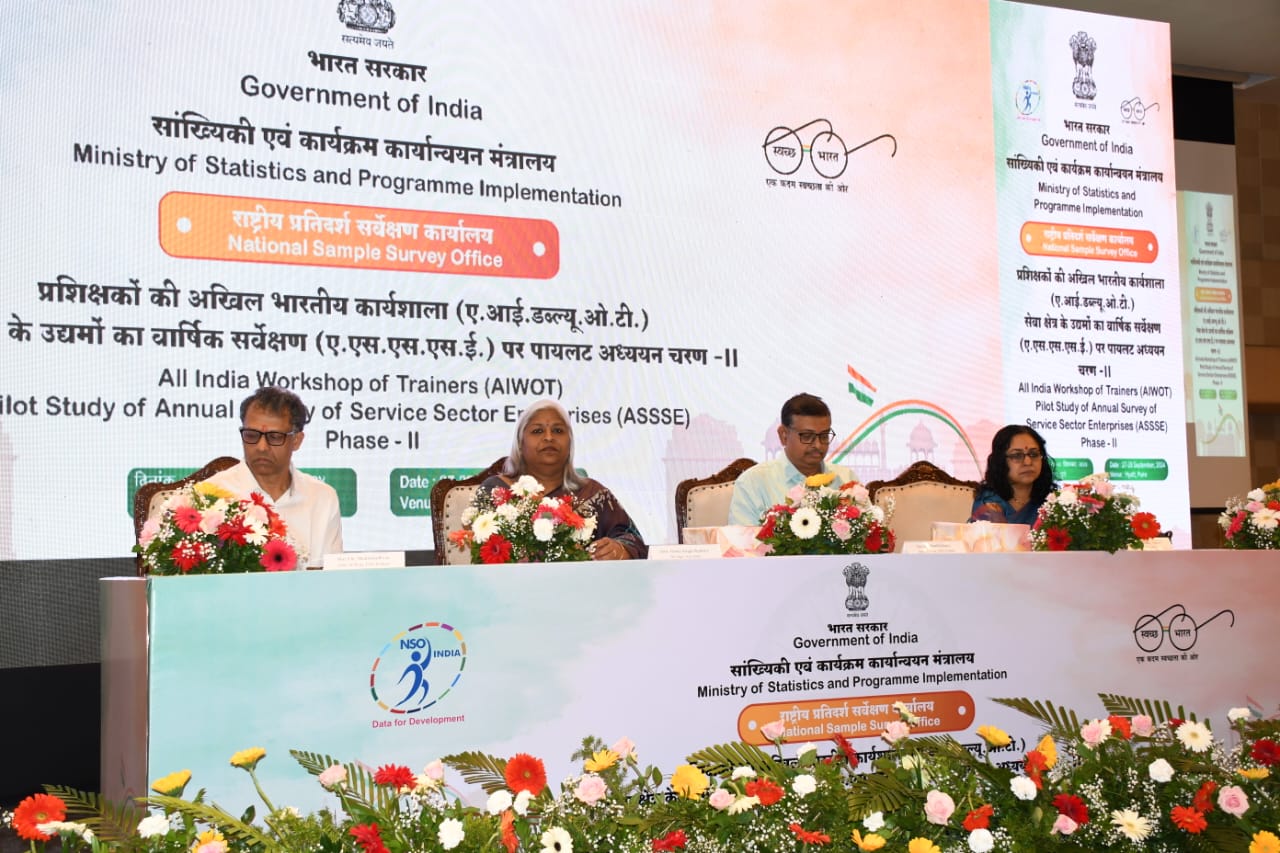- Courses
- GS Full Course 1 Year
- GS Full Course 2 Year
- GS Full Course 3 Year
- GS Full Course Till Selection
- CSAT
- 5 LAYERED ARJUNA Mentorship
- Public Administration Optional
- Online Program
- GS Recorded Course
- NCERT (Recorded 500+ Hours)
- Polity Recorded Course
- Geography Recorded Course
- Economy Recorded Course
- AMAC Recorded Course
- Modern India, Post Independence & World History
- Environment Recoded Course
- Governance Recoded Course
- Science & Tech. Recoded Course
- International Relations and Internal Security Recorded Course
- Disaster Management Module Course
- Ethics Recoded Course
- Essay Recoded Course
- Current Affairs Recoded Course
- ABOUT US
- OUR TOPPERS
- TEST SERIES
- FREE STUDY MATERIAL
- VIDEOS
- CONTACT US
Export Growth vs. Environment: India's Tea and Sugar Dilemma
Export Growth vs. Environment: India's Tea and Sugar Dilemma
- The vast agroclimatic zones prevalent in India allowed it to produce and export diverse quantities of agricultural products.
- Since the beginning of the 21st century, India's agricultural export basket has been significantly expanded.
- The Indian agricultural export is valued at $53.1 Billion in 2022-2023, up from $8.7 billion in 2004-2005, a six-fold increase in less than two decades.
What role do agricultural exports play in developing countries like India?
Agricultural exports play a crucial role in strengthening developing economies like India. It enables India in:
- Increasing Revenue: Exporting goods and services adds to national income, supporting public infrastructure, healthcare, and education by creating employment and stimulating production.
- Attracting foreign currency reserves: Agricultural exports generate foreign currency, reducing trade deficits and strengthening India's ability to pay for critical imports like crude oil and capital goods.
- Transactional Options: A strong export base diversifies trade partnerships, reduces dependency on specific markets, and enhances global integration, fostering economic resilience.
Is there any sustainability concern associated with agricultural exports in India?
Yes, agricultural exports in India raise sustainability concerns. They can be understood through ecological, social, and economic aspects.
- Ecological: Intensive farming for exports depletes water resources, reduces soil fertility, and leads to excessive use of fertilizers and pesticides, harming biodiversity.
- Social: Export-focused agriculture prioritizes profits over local food security, marginalizing small farmers.
- Economic: Dependence on global markets makes the economy vulnerable to price volatility and trade restrictions
To understand the paradox between export growth and sustainability, tea and sugar are two prominent commodities in India with a large domestic and export-orientated consumption base. They offer good examples to illustrate the problems herein.
How is the growth of tea exports creating a paradox between economic benefits and environmental sustainability?
India, the world’s second-largest tea producer and fourth-largest exporter, exported 188.76 million kg of tea in 2022, valued at $641.34 million. Domestic consumption accounts for 80% of production. Key export destinations include the UAE, Russia, Iran, the U.S., and the U.K.
However, the tea industry faces serious sustainability challenges related to wildlife interactions, chemical usage, and labour rights:
- Human-Wildlife Interactions:
- Many tea plantations are near forests, often along elephant migratory routes.
- This leads to frequent conflicts, with elephants damaging property and endangering lives.
- Chemical Use:
- Tea plantations heavily depend on synthetic pesticides (85% of total pesticide use).
- Harmful chemicals like DDT and Endosulfan are present in tea products.
- These chemicals can cause serious health issues like cancer, neurotoxicity, and impaired development.
- Labour Concerns:
- Most plantation workers are women, often underpaid and working in unsafe conditions.
- Laws like the Plantations Labour Act to strengthen worker safety are poorly enforced, leaving workers vulnerable.
About Tea
|
How is the growth of sugar exports creating a paradox between economic benefits and environmental sustainability?
India is the world’s second-largest sugar producer, accounting for 20% of global production, with 34 million metric tonnes produced annually. Sugar exports grew significantly, reaching $4,600 million in 2021-22, with exports to 121 countries. The sugar industry supports 50 million farmers and half a million workers, with an annual turnover of ₹1 lakh crore.
However, it faces severe sustainability challenges, especially concerning water use, biodiversity loss, and poor labour conditions:
-
Water Management:
- Sugarcane is a water-intensive crop; 1 kg of sugar requires 1,500–2,000 litres of water.
- Along with Rice, it occupies 25% of India’s gross cropped area but uses 60% of total irrigation water, reducing availability for other crops.
- Over-reliance on sugarcane strains groundwater and irrigation systems, especially in Maharashtra and Karnataka.
- Environmental Impact: Expanding sugarcane farms have replaced natural ecosystems like grasslands, leading to biodiversity loss.
-
Labor Issues:
- Workers face harsh conditions, long hours, and rising heat risks in peninsular India.
- Many are trapped in debt cycles, increasing mental and physical stress.
About Sugarcane
|
How can millet be the solution to remove such a paradox?
While challenges remain with crops like tea and sugar, millets present a sustainable alternative. They are well-suited to harsh climates and require fewer resources to grow. Millets help preserve soil health and contribute to nutritional security. The export of millets has seen impressive growth, from $26.97 million in 2020-21 to $62.95 million in 2021-22, nearly a 2.5-fold increase. In FY 2022-2023, India exported over 169,000 metric tonnes of millets worth $75.45 million. This growth highlights millets' potential as a sustainable crop that benefits both the economy and the environment.
Its major benefits include:
- Resilience to Harsh Conditions: Millets thrive in tough conditions, needing fewer resources like water, making them ideal for resource-scarce environments.
- Soil Health: They preserve soil quality by improving its structure and nutrient content, reducing the need for chemical fertilizers.
- Nutritional Security: Millets are highly nutritious, offering essential vitamins and minerals, which contribute to improved public health.
Apart from the above measures, what are the other measures required to remove paradox?
To remove the paradox between the economic growth driven by sugar and tea exports and the environmental sustainability challenges these industries face, several additional measures are needed:
- Effective water management practices: For crops like sugarcane, which are highly water-intensive, methods like drip irrigation, rainwater harvesting, and crop rotation can significantly reduce water consumption. Encouraging farmers to adopt water-efficient technologies and practices is essential to alleviate the pressure on India's water resources.
- Promoting organic farming: Encouraging the use of organic fertilizers and reducing the reliance on harmful pesticides can help mitigate soil degradation and chemical contamination of water sources, which are major environmental concerns with sugar and tea production.
- Diversification of Crops: Encouraging farmers to diversify into climate-resilient and low-resource-demand crops like millets, pulses, and legumes can help reduce the pressure on sugarcane and tea production.
- Development of High-Yield and Resilient Varieties: Focusing on research to develop drought-resistant, high-yield tea and sugarcane varieties would help mitigate environmental pressures.
- Farmer Education Programs: Providing training to farmers on sustainable farming practices and the long-term benefits of resource-efficient techniques can encourage them to adopt practices that benefit both the environment and their livelihoods.
- Enforcing Labor Laws: In addition to improving environmental sustainability, India should focus on better enforcement of labour regulations in tea and sugar industries. This includes ensuring proper wages, better working conditions, and access to healthcare for workers.
India’s agricultural sector benefits from both a large domestic market and growing exports. However, this growth can create a paradox, as the increasing dependency between producers, consumers, and the environment may harm ecological and social sustainability. To build a fair and sustainable economy, it’s crucial to address environmental issues, worker safety, and ensure that economic benefits reach local communities.




